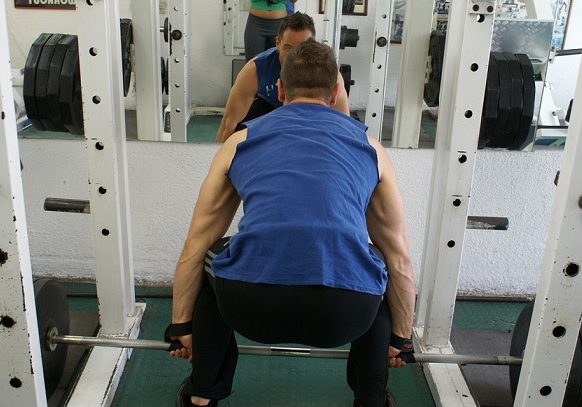Best Way To Build Muscle
What is the best way to build muscle? I'm sure that if you have a few years of productive training under your belt, you've asked many times this question. Maybe you went already through various training philosophies to eventually realize that the difference between them is minimal.
I'm not referring here to your Lazy Joe who, in spite of having wasted his life in the gym, is indistinguishable from somebody who never touched a dumbbell. Nor to the naïve beginner who expects to “add up 18 pounds of muscle in just 2 weeks” with Ellington Darden's New HIT or other similar big-talking programs.
So you've tried it all (or at least you think so) but you are still looking for the muscle building holy grail. But is there such a thing? And if so, then why even veteran bodybuilders with a lifetime lifting experience are rather confused?
“Till very recently”, says Dave Draper – The Blond Bomber from the '70s, “as I prepared to write these pages by reading background material and intelligent training resources, I've never been confused. The confusion came with the reading.” (Brother Iron, Sister Steel: A Bodybuilder's Book, 2001)
“Volume training”, confesses Frank Zane, “can't say it didn't work. I won all the top titles. Would I do it differently given another chance? Knowing what I do now, maybe I would.” (Building the Body, 2008)
“How come I've modified my point of view on this matter?”, concedes Stuart McRobert in the last edition of his great book Beyond Brown. “I've always acknowledged that individual variation, and the need for individual experimentation with training frequency of each exercise. Reader feedback and personal experience have contributed; and some people claim that there's some backup science too.”
What do you see in these affirmations? That's right...doubt and inconsistency. This occurs for the simple reason that we still don't master the theory behind the hypertrophy process, let alone the best way to build muscle.
And to make things even more puzzling, the plain truth is that most programs (at least the ones that are not retarded) work pretty well up to a point if you are consistent and determined to work hard – which is not to say that all of them are equal.
However, the reality is that if you want to take your training to the next level you need more than sweat and groans. You need to know what you are doing or otherwise you will never achieve your full potential.
So make sure you understand and apply the following 5 points for optimizing your results:
1) Start with the most demanding exercises

The big compound exercises such as squats and deadlifts use lots of muscle mass, which means that the reward is also substantial because they produce a greater disruption of homeostasis.
I should probably mention that the current research doesn't quite support the fact that the resulting hormonal response from such an intense stimulus has a tremendous effect on overall hypertrophy.
Nevertheless, decades of empiric evidence clearly indicates that heavy squats and deadlifts are a must if you really want to get big. Arnold didn't build the bulk of his physique with curls or extensions, and neither will you.
So my point is that you should give priority to what matters most, and you will definitely need all your physical and mental strengths to really work hard on these exercises. They should be the nucleus of any serious program, and your progression should be based on them.
2) Use multiple repetition ranges
Muscle hypertrophy occurs when its fibers are stimulated long enough to be fatigued. According to the size principle of motor unit recruitment, if the tension produced by heavy weights is too high, only the fast twitch fibers (which are larger and stronger) can be stimulated enough because they fatigue rapidly.
But not the same thing happens with their slow motor unit counterparts which are likely to remain unstimulated because they are too weak to sustain the load.
You may argue that putting any emphasis on the slow-twitch fibers for muscular hypertrophy is living in a fool's paradise because their hypertrophy range is very limited to begin with.
And while is true that there is no such a thing as a marathon runner carrying around a herculean physique, it's also true that most bodybuilders show a more pronounced adaptation of their slow-twitch fibers than other strength athletes – which suggests that in fact we may underestimate their growth potential.
3) Limit your training volume
There are two variables that determine muscle adaptation, and these are load and time under tension. Or more accurately, is not the variables per se, but rather the relationship between them.
If the weight is too light, muscle fibers are not stimulated properly, and if the duration of the stimulus is too short, they are not fatigued enough. So what do you do in this case? Yes, you do multiple sets, but the question is what “enough” really means in this context...
Getting a feeling of when doing more sets becomes counterproductive is not difficult to figure out. This will translate in a lack of motivation. Your pumped sensation will seem to go away with every redundant set, and an inner voice will let you know that you are just wasting your time.
I rarely do more than 3 sets for each exercise (except the warming-up), and when this happens it actually means that my workout was not hard enough – which is not good. Intensity can be indeed traded for volume, but keep in mind that the balance between them is rather rigid.
4) Use pre-exhaustion only rarely
As my early bodybuilding education came from Arthur Jones's bulletins and Mike Menzer's writings, I used to apply the pre-exhaustion principle to the letter almost every workout.
The idea behind this is simple: in an attempt to increase intensity, right before doing a compound exercise, you perform an isolation movement that targets the same muscle.
Long story made short, I tortured myself diligently with leg extensions followed by leg press, pull-overs followed by pull-downs, peck-deck followed by bench press, delt-raises followed by overhead press for about two years only to realize that my prodigious effort didn't make much difference.
So before you make the same mistake, bear in mind that pre-exhaustion will inevitably reduce the tension applied to the target muscles, and this may compromise your results.
5) End with isolation exercises
Isolation exercises should definitely have their place in your program. You will never get a refined physique or correct the inevitable weak points without them.
I was also mentioning that we may underestimate our slow-twitch fibers growth potential, so here you have the opportunity to focus on this direction. This is when you should keep a slower tempo (especially on the eccentric movement), and make the light weights seem heavy.
There is absolutely no point to use excessive loads on isolation movements because this would defeat the whole purpose. Trying to satisfy your ego by choosing a too heavy weight for barbell curls would do nothing but transform a good arm exercise into a bad back exercise.
Best Way To Build Muscle: Wrap-Up
Optimum muscle hypertrophy is not a matter of heavy vs light, compound vs isolation, or machines vs free weights.
Like most things in life, portraying the various training variables in black or white is a mistake. Always remember that! So instead of adhering blindly to some inflexible tenets, integrate them thoroughly into your program and you will surely notice the difference.
Return from Best Way To Build Muscle to Home





